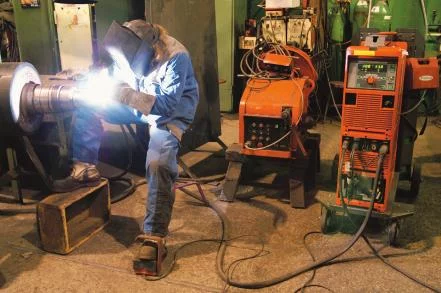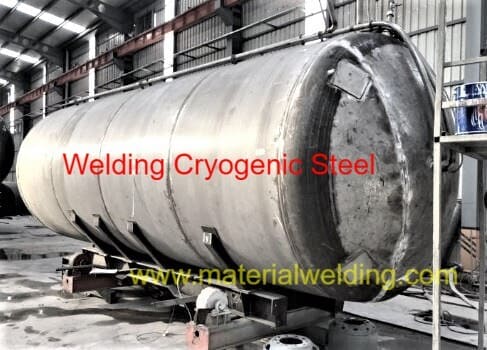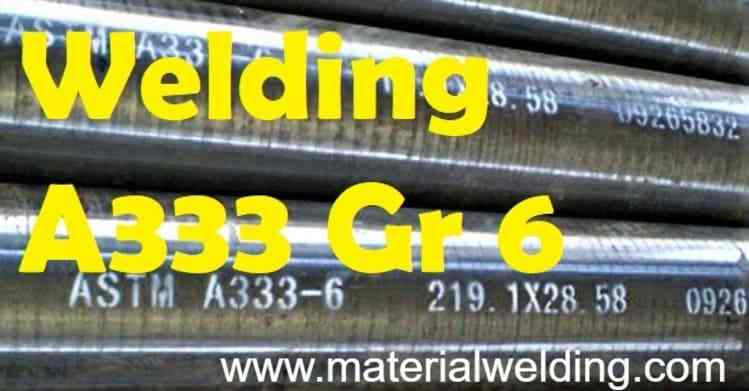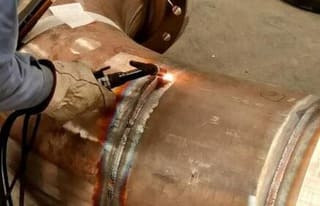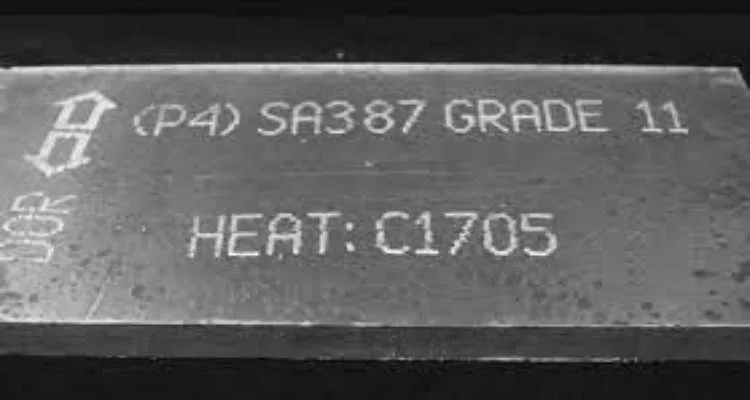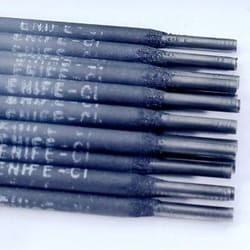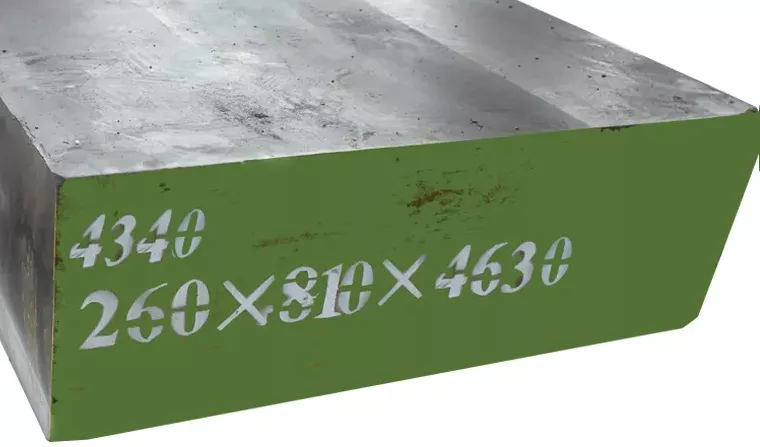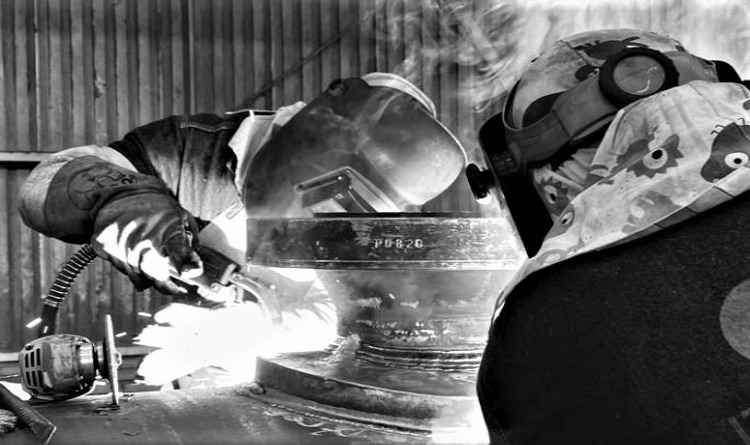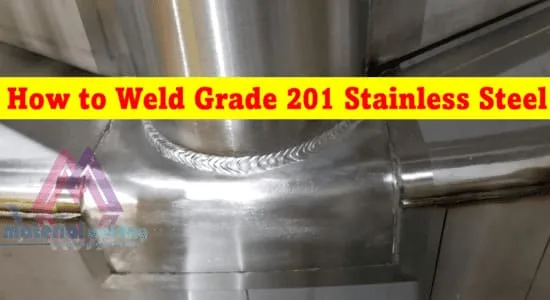Knowing how to weld 9 Nickel steel or commonly known as 9% Ni Steel ensure that the welded part shall fulfill its intended application without failure.
9% Nickel steel is generally used alloy for making of LNG Tanks, shipping and other cryogenic tanks & vessels. Most common grades are ASTM A333, 334 Grade 8, SATM A353 and ASTM A553.
What is 9% Nickel Steel?
9% nickel steel is a high-strength, low-alloy steel that contains 9% nickel. The steel has excellent toughness and strength at low temperatures, making it ideal for use in the oil and gas industry. The steel is also resistant to corrosion and has a high resistance to stress cracking.
There are many alloys that can be used for cryogenic applications, but 9 nickel steel is one of the best. This alloy has a high strength-to-weight ratio and is able to retain its properties at extremely low temperatures.
It has excellent weldability. 9 nickel steel is often used in the construction of storage tanks, pipes and pressure vessels.
9% Nickel Steel Material Specification
The UNS Number of 9% Nickel Steel is UNS K81340. The ASME Section IX Welding P Number for 9% Nickel Steel is P. No. 11A.
The most commonly used 9 Nickel Steel material specifications are:
- ASTM A 333 Grade 8
- ASTM A 334 Grade 8
- ASTM A 353
- ASTM A 420 Grade WPL8
- ASTM A 522 Grade I
- ASTM A 553
- ASTM A671Gr. CG 100 & CH 100
- EN 10028-4 X8Ni9+NT640
9% Nickel Steel Chemical Composition
9 Nickel Steel is a type of stainless steel that contains 9% nickel. The chemical composition of 9 Nickel Steel includes:
| Element | Composition |
|---|---|
| Carbon % | 0.13 Max. |
| Manganese % | 0.90 Max. |
| Silicon % | 0.15 – 0.30 |
| Nickel % | 8.5 -9.5 |
| Sulfur % | 0.015 Max. |
| Phosphorus % | 0.015 Max. |
Nickel steel is an alloy of iron and nickel. The table above shows the chemical composition of nickel steel.
Nickel steel is composed of iron and nickel. The percentages of these two elements in the alloy can vary, but they are typically around 90% iron, 9% nickel and balance other elements.
Nickel steel is known for its high strength and toughness, making it ideal for use in cryogenic applications.
9% Nickel Steel Mechanical Properties
9 Nickel Steel is a type of steel that contains nickel as the primary alloying element. It is known for its high strength and toughness, making it an ideal choice for use in various mechanical applications. The following table outlines the key mechanical properties of 9 Nickel Steel:
| Property | Value |
|---|---|
| Tensile Strength, Ksi (MPa) | 100 (690) minimum |
| Yield Strength, Ksi (MPa) | 75 (515) minimum |
| % Elongation | 20% minimum |
9% Nickel Steel Weldability
The most common nickel steel is type 9, which contains 9 percent nickel. Welding 9 nickel steel can be difficult due to its high nickel content. The steel is prone to hardening, and should be welded in the fully heat treated condition.
Right filler wire is one of the most important considerations when welding 9 nickel steel. This helps to prevent the steel from hardening and makes it easier to weld.
Use low welding heat input to avoid coarse grain microstructure formation. Low heat input with resultant increase in number of welding passes will provide additional tempering effect on the weldment.
A welding procedure must be qualified to ensure the weld shall meet the minimum required mechanical properties. Careful selection of right filler wire, welding heat input and PWHT shall be considered before welding.
Preparation for welding of 9 Nickel Steel
The material before welding requires weld preparation and it can be carried out using gas cutting (oxyfuel or plasma) or by grinding or machining.
If using gas cutting, grind the weld area before welding to remove any hardening effect or HAZ created by gas cutting.
Welding rod for 9% Nickel Steel
There are many welding rods on the market these days and it can be hard to know which one is right for your project.
If you’re looking to weld 9 nickel steel, then you need a welding rod that is specifically designed for that material. Here are a few of the best options on the market:
- ENiCrFe-2 (AWS A5.11)
- ENiCrFe-3 (AWS A5.11)
- ENiCrMo-3, ENiCrMo-6 (AWS A5.11)
- ENiCrFe-4 (AWS A5.11)
- ENiCrFe-9.
- ENiCrFe-10
- ENiMo-8, ENiMo-9
TIG- MIG Filler wire rod for 9% Nickel steel as per AWS A 5.14 Specification:
- ERNiCrFe-6
- ERNiCr-3
- ERNiCrMo-3
- ERNiMo-8, ERNiMo-9 (Nickel-Molybdenum type rod)
How to Weld 9 Nickel Steel?
The most commonly used welding filler wire rod for 9 Nickel Steel are ENiCrMo-3 (Stick welding) & ERNiCrMo-3 (TIG & MIG Welding).
ENiCrFe-4 is also used for welding 9% Nickel steel. ENiCrFe-4 has a higher strength compared to the ENiCrFe-2 rod.
9 Nickel Steel Welding
9 Nickel Steel is usually heat treated before welding by applying quenching and tempering or double normalizing to enhance its maximum toughness.
As it is not possible to do Q & T after welding, the material is pre-heat-treated to avoid weld cracking and other issues.
9% Nickel Steel can be welded using Stick Welding (SMAW), TIG welding, MIG welding and SAW Welding.
Welding preheat is not required for welding of 9% Nickel Steel. Also, PWHT is not required for this material for thicknesses up to 50 mm.
Welding stainless and 9 nickel steel cryogenic vessels
Austenitic stainless steel and 9 Nickel steel have different coefficients of thermal expansion and this must be considered when welding stainless steel to 9 Nickel steel.
You can perform the welding of stainless and 9 Nickel steel using ERNiCrMo-3 or ENiCrMo-3 welding filler rod. These are low-carbon wires with excellent cryogenic temperature toughness for welds.
Reference:
